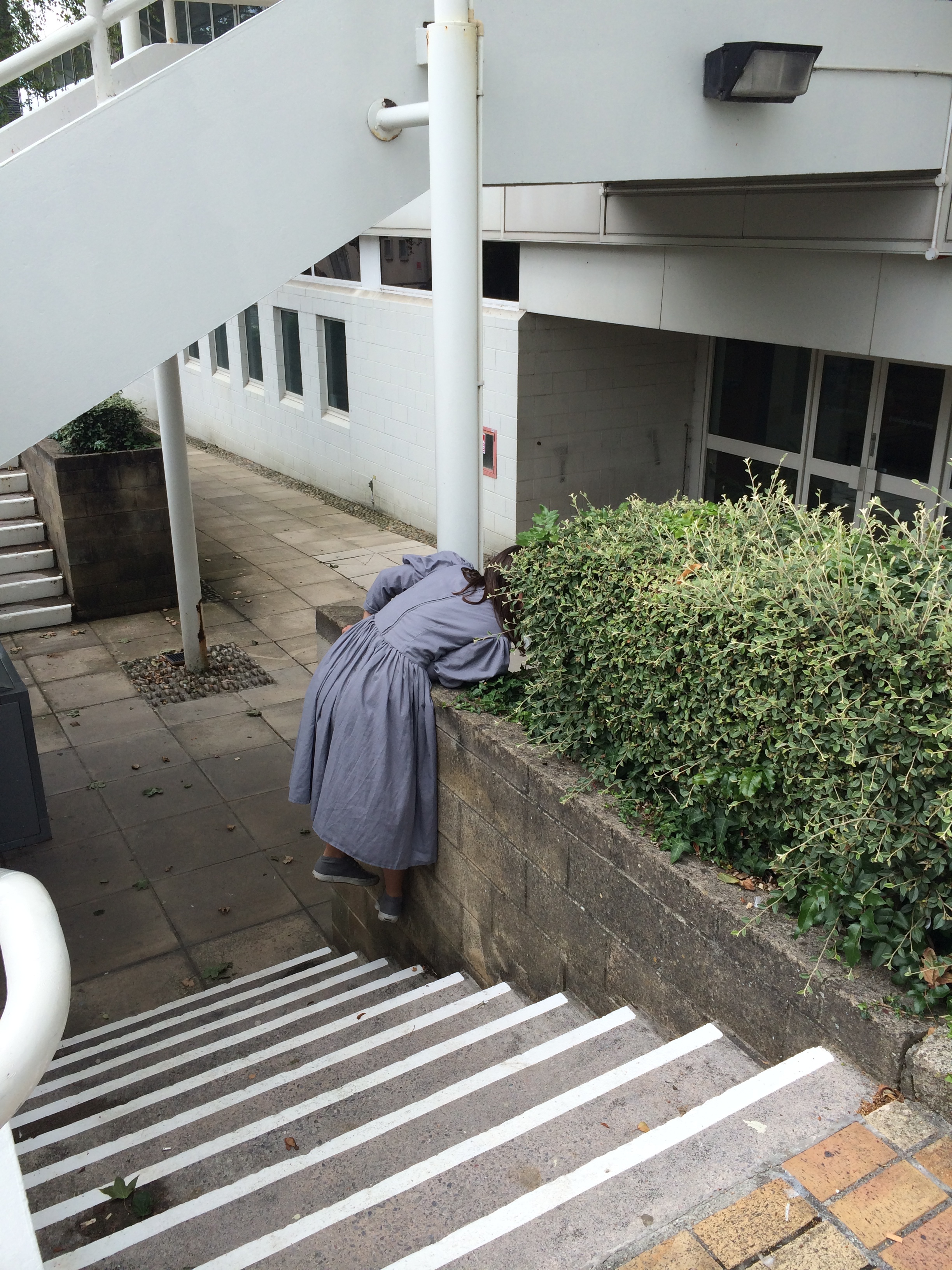Are You Known to Us? (2009-2015)
Are You Known to Us? Was the research project I conducted for my practice-as-research PhD at the University of Plymouth (awarded in May 2015). My research explored performance, the urban built environment and the politics of gender.
Reclaim the Streets
The idea for this research came when having completed a degree in drama and a master’s degree in performance I found myself in a suitable critical space within which to re-examine the years I had devoted to being a ‘skateboarder’. The research then was drawn from experiences that began in 1998, of the social framework within which my own practice as female skateboarder was couched. I grew up in a small town in the Midlands with a fairly limited scope for exposure to alternative cultures, so my earliest forays into skateboarding were through a magazine, which was then titled Sidewalk Surfer and which I came across by accident in the high street newsagents, WHSmith.
The cover appealed to me first and foremost. It had a large photograph of an empty open urban vista at night. The whole front page consisted of a gigantic concrete wave and above it the body of a man and a skateboard connected, lit by a street light and –photographed mid-trick – several feet above the ground. This magazine became a portal into the skateboarding world. I studied it carefully before deciding which board, trucks, wheels and bearings I should buy for my first ‘set-up’. And when it arrived, the first thing I did was to position the skateboard on the carpet in the front room of our house – so that it was stable – and to try to learn to ‘ollie’.
I could have surmised that this was not a particularly realistic or sustainable hobby given that my earliest attraction to skateboarding was a mediated, fictional one, and my first experiences on a board, static and carpeted, but I had an image of myself gliding effortlessly through an empty, endless urban landscape, performing tricks here and there to allow myself a smooth transition from one place to another.
When I began to develop a practice for myself I became very aware of my status as ‘girl’ skateboarder. My presence in skateparks and on the streets was marked by –often positive and well-meaning –attention. But attention of any kind can still be uncomfortable and a difficult context within which to learn a new skill and to go through the process of failing and improving. The scrutiny I experienced as a female skateboarder was matched by the transition I was also experiencing as an adolescent. In 1998, when I got my first skateboard, I was 16-years-old and in the process of transitioning from girl to woman.
I became resigned to the fact that, as a girl, I had become attracted to something that was not really meant for me. All the people that were doing this, it seemed, were boys and men. I wanted to blend in, not stand out. Why were most other girls not interested? And why did I – as girl quickly turning into woman – want to do it? These are the questions that continued to circulate for me, even after I had (mostly) given up skateboarding, and it was these questions that led to my PhD.
This enquiry, which began with skateboarding, raised broader concerns: I identified skateboarding as a type of play with its origins in the playful use of urban space, and I recognised that skateboarding was akin to other practices like rollerblading and parkour in its attraction to – particularly – boys and men.
My research considered, how and why might a woman play in the public built environment?
This question invites further questions about whether it is only those who meet certain gendered standards who have the freedom to express themselves in this way. And so, what politics are implicit in the act when someone who does not meet the gendered norm chooses to play? What is the connection between gender and the built environment? What is the connection between gender and this type of play?
There were several ways to approach this. Considering the notion of play in the broadest sense, as a realm of human activity incorporating a wide range of non-functional, cultural activities (Schechner 2002), one method would be to examine the work of artists, and particularly female artists, making performance in the built environment. Another method would be to examine current literature on the topic. But, in order to explore this social issue in a rigorous and direct way it was necessary to develop a practice of play as research method. This was particularly relevant because it was through the experiences of my body – as skateboarder, as girl, as woman – that this enquiry had come to light, and so it seemed highly appropriate that my bodily experience would be an important site for the research to be framed and for the production of knowledge to be understood.
Considering this enquiry, the aims of the project reflect that the work had a performative as well as a productive function:
To create a social experiment within which responses to and experiences of playing as a woman could be examined,
to reclaim the act of playing for an adult feminine body, and
to inscribe an alternative representation of ‘woman’ in public space.
As a requirement of the submission of my thesis, I also created documentation of the practice I presented for my examiners. This final 'showing' of practice was titled Haunts (inspired by a feature in Sidewalk Magazine during the 1990s and 2000s) and I documented this practice through the creation of 'artist pages' (inspired by the regular feature in Performance Research Journal). My Haunts pages were bound into my thesis and submitted alongside the written work and in conjunction with the practical work I had been making throughout my PhD study.
My thesis can be read in full online here.


